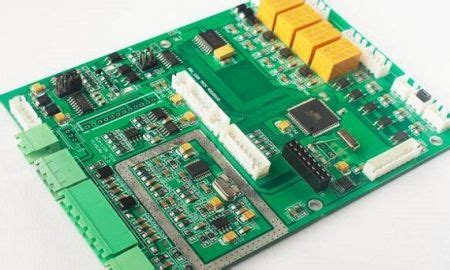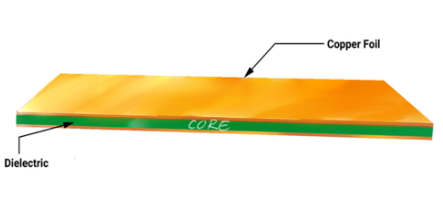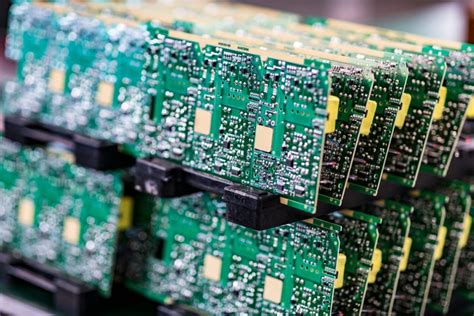Basic Guidelines for Mixed-Signal PCB Layout Design
This article will detail what you should consider when designing the layout of a mixed-signal PCB. This article covers component placement, board layering, and ground plane considerations. The guidelines discussed in this article provide a practical approach to the layout design of mixed-signal boards that should be helpful to engineers of all backgrounds.
Mixed-signal PCB design requires a basic understanding of analog and digital circuits to minimize (if not prevent) signal interference. The components that make up modern systems are both those that operate in the digital domain and those that operate in the analog domain, and they must be carefully designed to ensure signal integrity throughout the system.
As an important part of the mixed-signal development process, PCB layout can be daunting, and component placement is just the beginning. There are other factors that must be considered, including the various layers of the board and how to properly manage these layers to minimize interference caused by parasitic capacitance (such capacitance can accidentally occur between the planes of the PCB).
Grounding is also an important step in the PCB layout design of mixed-signal systems. Although grounding is a topic that is often debated in the industry, developing a standardized approach is not necessarily the easiest task for engineers. For example, a single issue with high-quality grounding can affect the entire layout of a high-performance mixed-signal PCB design. Therefore, this aspect should not be ignored.
Component Placement
Similar to building a house, a floor plan of the system must be created before placing circuit components. This step will establish the overall integrity of the system design and should help avoid interference from high-noise signals.
When developing a floor plan, it is recommended to follow the signal paths of the schematic, especially for high-speed circuits. The location of components is also a critical aspect of the design. Designers should be able to identify important functional blocks, signals, and connections between blocks to determine the best location for each component in the system. For example, connectors are best placed at the edge of the board, while auxiliary components such as decoupling capacitors and crystals must be placed as close as possible to the mixed-signal devices.
Separation of Analog and Digital Blocks
In order to minimize the common return path of analog and digital signals, consider separating analog and digital blocks so that analog signals do not mix with digital signals.

Figure 1. Separation of analog and digital circuits
Figure 1 shows a good example of separation of analog and digital circuits. The following should be noted when splitting the analog and digital sections:
● It is recommended to place sensitive analog components such as amplifiers and reference voltage sources within the analog plane. Similarly, high-noise digital components such as logic control and timing modules must be placed on the other side/digital plane.
● If the system contains a mixed-signal analog-to-digital converter (ADC) or digital-to-analog converter (DAC) with low digital current, this can be treated similarly to analog components contained in the analog plane.
● For designs with multiple high-current ADCs and DACs, it is recommended to separate the analog and digital power supplies. That is, AVCC must be tied to the analog section, while DVDD should be connected to the digital section.
● Microprocessors and microcontrollers may take up space and generate heat. These devices must be placed in the center of the board for better heat dissipation and should be close to the circuit modules associated with them.
Power supply module
The power supply is an important part of the circuit and should be handled properly. As a rule of thumb, power modules must be isolated from the rest of the circuit while still being close to the components they power.
Devices in complex systems may have multiple power pins, in which case dedicated power modules can be used for the analog and digital sections to avoid noisy digital interference.
On the other hand, power routing should be short and direct, with wide traces to reduce inductance and avoid current limiting.
Decoupling Techniques
Power supply rejection ratio (PSRR) is one of the important parameters that designers must consider when achieving the target performance of the system. PSRR measures the sensitivity of the device to power supply changes and will ultimately determine the performance of the device.
In order to maintain the best PSRR, it is necessary to prevent high-frequency energy from entering the device. To achieve this, a combination of electrolytic and ceramic capacitors can be used to properly decouple the device power supply to a low-impedance ground plane.
The purpose of proper decoupling is to create a low-noise environment for circuit operation. The basic rule is to allow the current to return easily by providing the shortest path.
It is important for designers to pay attention to the high-frequency filtering recommendations for each device. More importantly, this list will serve as a guide, providing general decoupling techniques and their proper implementation:
● Electrolytic capacitors act as charge reservoirs for transient currents to minimize low-frequency noise on the power supply, while low-inductance ceramic capacitors are used to reduce high-frequency noise. In addition, ferrite beads are optional but add high-frequency noise isolation and decoupling.
● Decoupling capacitors must be placed as close to the device’s power pins as possible. These capacitors should be connected to a large area of a low-impedance ground plane with vias or short traces to minimize additional series inductance.
● Smaller capacitors (typically 0.01μF to 0.1μF) should be placed as close to the device’s power pins as possible. This arrangement prevents erratic operation when the device has multiple outputs switching simultaneously. Electrolytic capacitors (typically 10μF to 100μF) should be no more than 1 inch from the device’s power pins.
● To make implementation easier, decoupling capacitors can be connected to the ground plane with a T-connection using vias near the device’s GND pins instead of creating traces. See Figure 2 for an example.

Figure 2. Decoupling Techniques for Power Pins
Board Layers
Once component placement and floorplanning are complete, we can look at another aspect of board design—often referred to as board layers. It is highly recommended to consider board layers before PCB routing, as this will determine the allowable return current paths for the system design.
Board layers refer to the vertical arrangement of copper layers in the board. These layers should manage current and signals throughout the board.

Figure 3. Example of a 4-layer PCB
Figure 3 shows a visual representation of the board layers. Table 1 details the setup of a typical 4-layer PCB:
Table 1. Typical 4-layer PCB

Typically, a high-performance data collection system should have four or more layers. The top layer is usually used for digital/analog signals, while the bottom layer is used for auxiliary signals. The second layer (ground layer) acts as a reference plane for impedance-controlled signals to reduce IR drops and shield digital signals in the top layer. Finally, the power plane is located on the third layer.
The power and ground planes must be adjacent to each other because they provide additional inter-plane capacitance that helps with high-frequency decoupling of the power supply.
Recommendations for mixed-signal designs have changed over the years with regard to ground planes. For years, it made sense to separate the ground plane into analog and digital portions, but for modern mixed-signal devices, a new approach is recommended. Proper floorplanning and signal separation should prevent issues associated with noisy signals.
Ground Planes: Split or Not Split?
Grounding is an important step in mixed-signal PCB layout design. A typical 4-layer PCB must have at least one layer dedicated to a ground plane to ensure that return signals return via a low impedance path. All integrated circuit ground pins should be routed and connected directly to a low impedance ground plane to minimize series inductance and resistance.
For mixed-signal systems, splitting analog and digital grounds has become a standard grounding approach. However, mixed-signal devices with low digital currents are best managed with a single ground. Going a step further, designers must consider which grounding approach is most appropriate based on the mixed-signal current requirements. Designers must consider two grounding approaches.
Single Ground Plane
For mixed-signal systems with a single low digital current ADC or DAC, a single solid ground plane would be the best approach. To understand the importance of a single ground plane, we need to review return currents. Return current is the current that returns to the ground and the traces between devices to form a complete loop. To prevent mixed signal interference, each return path must be tracked throughout the PCB layout.

Figure 4. Return current in a system with a solid ground plane
The simple circuit in Figure 4 shows the advantage of a single solid ground plane over a split ground plane. The signal current has an equal but opposite return current. This return current flows back to the source in the ground plane, and it will follow the path of least impedance.
For low frequency signals, the return current will follow the path of least resistance, usually a straight line between the device ground reference points. But for higher frequency signals, part of the return current will try to return along the signal path. This is because the impedance along this path is lower and the loop formed between the outgoing and returning currents is minimal.
Separation of analog and digital grounds
For complex systems where it is difficult to adopt a solid ground scheme, split ground may be more appropriate. Split ground planes are another common approach, where the ground plane is divided into two: an analog ground plane and a digital ground plane. This is suitable for more complex systems with multiple mixed signal devices and consumes high digital currents. Figure 5 shows an example of a system with a split ground plane.

Figure 5. Return Current in a System with a Split Ground Plane
For a system with a split ground plane, the simplest solution to achieve overall grounding is to eliminate the interruption in the ground plane and allow the return current to take a more direct route and flow back through the star ground junction. A star ground is the junction where the analog and digital ground planes are connected together in a mixed-signal layout design.
In common systems, star ground can be associated with a simple narrow continuous junction between the analog and digital ground planes. For more complex designs, star ground is often implemented with a jumper shunt to the ground joint. No current flows in the star ground, so high-current carrying joints and jumper shunts are not required. The main purpose of the star ground is to ensure that both grounds have the same reference level.
It is important for designers to check the grounding recommendations provided in the data sheet of each device to ensure that the grounding requirements are met and to avoid ground-related issues. On the other hand, mixed-signal devices with AGND and DGND pins can be connected to their own ground planes because the star ground also connects the two grounds at one point. This way, all the noisy digital currents flow through the digital power supply, all the way to the digital ground plane, and back to the digital power supply while being isolated from the sensitive analog circuitry. Isolation of the AGND and DGND planes must be implemented on all layers of a multi-layer PCB.
Other Common Grounding Practices
The following steps or checklist can be used to ensure that a proper grounding scheme is implemented in a mixed-signal/digital system:
● The connection to the star ground point should be made with a wide copper trace.
● Check the ground plane for narrow traces, which are undesirable.
● It is helpful to provide pads and vias so that the analog and digital ground planes can be connected when necessary.
Conclusion
PCB layout for mixed-signal applications can be challenging. Creating a component floorplan is only the starting point. Proper management of board layers and developing a proper grounding scheme are also key points that system designers must consider when striving to achieve the best performance in a mixed-signal system layout. Creating a component floorplan will help establish the overall integrity of the system design. Proper organization of board layers will help manage current and signals throughout the board. Ultimately, choosing the most advantageous grounding scheme will improve system performance and prevent problems associated with noisy signals and return currents.







